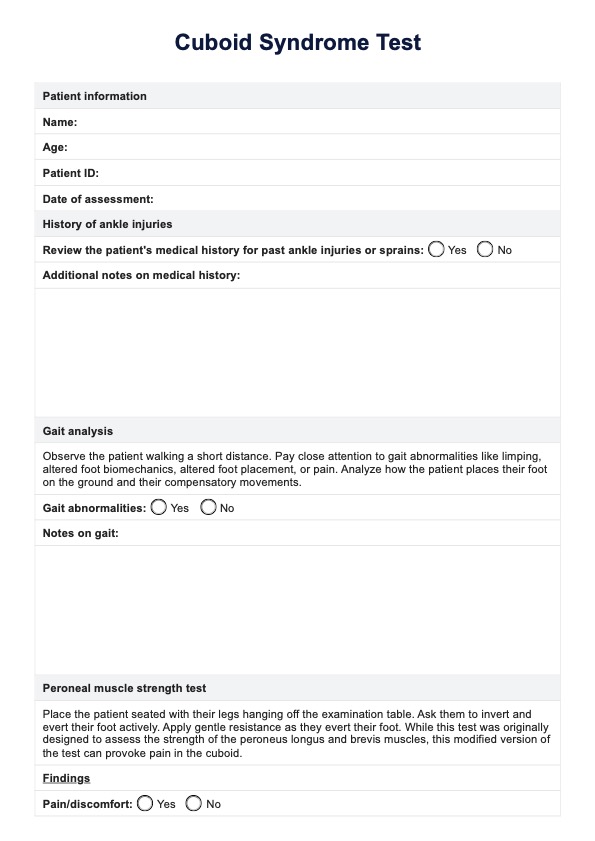Diagnosing cuboid syndrome involves a thorough assessment, including a cuboid syndrome test, evaluating lateral midfoot pain, and examining the bone and surrounding structures, such as the navicular and cuboid bones.

Cuboid Syndrome Tests
Learn more about accurately diagnosing cuboid syndrome. Use our Cuboid Syndrome Tests template to improve patient care and streamline treatment.
Use Template
Cuboid Syndrome Tests Template
Commonly asked questions
Peroneal cuboid syndrome typically presents with lateral midfoot pain, tenderness around the cuboid bone, and challenges in weight-bearing activities.
To heal cuboid syndrome, physical therapists can manipulate or mobilize the cuboid bone, followed by immobilization if necessary. Supporting the foot with taping, bracing, orthotics, and strengthening exercises, along with RICE and anti-inflammatory medications, also aids recovery.
EHR and practice management software
Get started for free
*No credit card required
Free
$0/usd
Unlimited clients
Telehealth
1GB of storage
Client portal text
Automated billing and online payments











